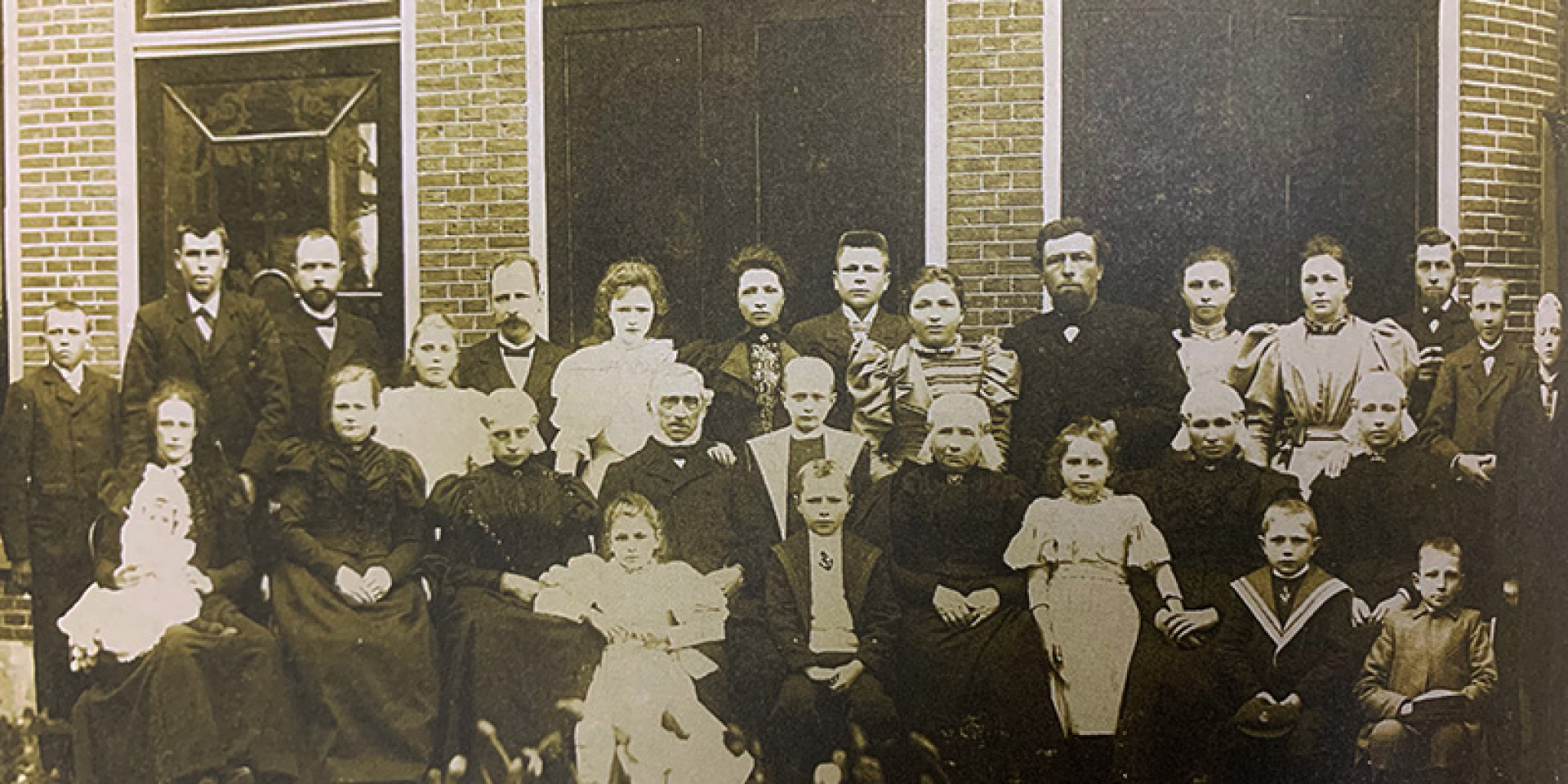
The history of Koopmans
The history of Royal Koopmans is all about the story of an enterprising family and a very special family business. It is a company that has developed from a mill driven by horsepower, first into a company using a steam engine, and later into the modern (international) company it is today: supplying many countries with flour, meal, food coatings and ingredients solutions.
-
1846 - 1876
A horse mill in Holwerd
Uilke Klazes Koopmans, a worker in his father's bakery, makes a bold decision. He resolves to stand on his own two feet. Soon after, he marries Trijntje Jans Bierma. He borrows 1,550 guilders (700 euros) from his family and buys a horse mill in the village centre of Holwerd, a town in the north of Friesland. With the assistance of his horses, he mills buckwheat: a nutritious raw material used to make bread and porridge.
In 1867, the horses are replaced by steam power and, due to the increasing production, he starts importing grain from America and the Baltic states. He decides to start looking for a more central location. When Jan Koopmans, Uilke Klazes' son, turns fourteen, he also starts working in his father's business.
![]()
-
1876 - 1900
The steam meal factory in Leeuwarden
During this period, the business moves to Leeuwarden, on the Noordvliet canal, and the first technical adjustments are implemented. Uilke dubs his factory Stoommeelfabriek Friso. Jan Koopmans takes over the business from his father in 1881 and is soon confronted with a downturn in the market. He starts to spread risks by not only marketing buckwheat, rye and wheat flour, but also by processing barley and maize. He also reduces production costs and increases his trading areas.
![]()
-
1900 - 1920
Growth in times of crisis
During this phase, the main focus is expansion and renovation in Leeuwarden. Jan buys several properties on the Vliet canal to expand his grain storage facilities. Expansion of production not only requires major renovations, but also the efforts of Jan's three sons Uco, Daan and Jo. The First World War breaks out and delays the plans. It also brings opportunities, however, and Jan and his sons see chances for further growth.
![]()
-
1920 - 1940
New products for consumers
In 1920, Stoommeelfabriek Friso is converted into a public limited company, and the three brothers take over the company from their father. This new guard also brings the winds of change to the company. The brothers come up with new directions for N.V. Koopmans Meelfabrieken, including new consumer products. They develop, among others, Koopmans baking products accompanied by their first advertising campaigns.
-
1940 - 1970
Marketing
Although the Second World War partially halts expansion plans, it also provides room to start developing new products. After the liberation in 1945, the company invests heavily in takeovers of other companies as well as in new construction and renovation. Product research also becomes increasingly important and Koopmans invests in marketing. Koopmans products and recipe booklets can be found in almost every kitchen.
![]()
-
1970 - 1996
Rapid development
In 1976, Her Majesty Queen Juliana bestows the 'Royal' predicate on Koopmans. This period is rather revolutionary. Koopmans Flour Factories wraps up its animal feed activities and invests in meal and flour production and consumer products.
Thanks to Koopmans, home baking becomes much faster and more convenient. Bakers discover that, thanks to the constant quality of the flour and innovations from Koopmans, the quality of their products increases. In 1995, Daan Koopmans II, named after his grandfather, is in charge of sales and marketing for the Meel department.
![]()
-
2000
Koopmans consumer product sales
In the year 2000, Koopmans sells the consumer products component to Dr. Oetker and focuses again on business-to-business, just like when the company started out.
![]()
-
2016
Koopmans Foodcoatings
Koopmans had purchased LaCo Crumbs in 1993 with a view to focusing on other food-processing companies in addition to the Koopmans Meel business unit. This business unit produces food coatings: breadcrumbs and batters. In 2016, the business unit continues under the name Koopmans Foodcoatings. KIEM, the Koopmans Innovation Centre, is founded in the same year.
![]()
-
2017
Start Koopmans Ingredients
We know that the grain kernel holds even more potential. As a result, Koopmans Ingredients has been developing a variety of natural solutions based on grain since 2017 to bind and thicken and to enrich foods with, for example, fibre.
![]()
-
2019
Royal Koopmans
With a new international name, Royal Koopmans, Pioneers in grain since 1846, heralds a new era. From day one, Koopmans not only works on products of the highest quality; innovation and development are also central. We work with our partners and customers all over the world on clean label solutions, to enable them to continue to surprise consumers with innovative products.
![]()









